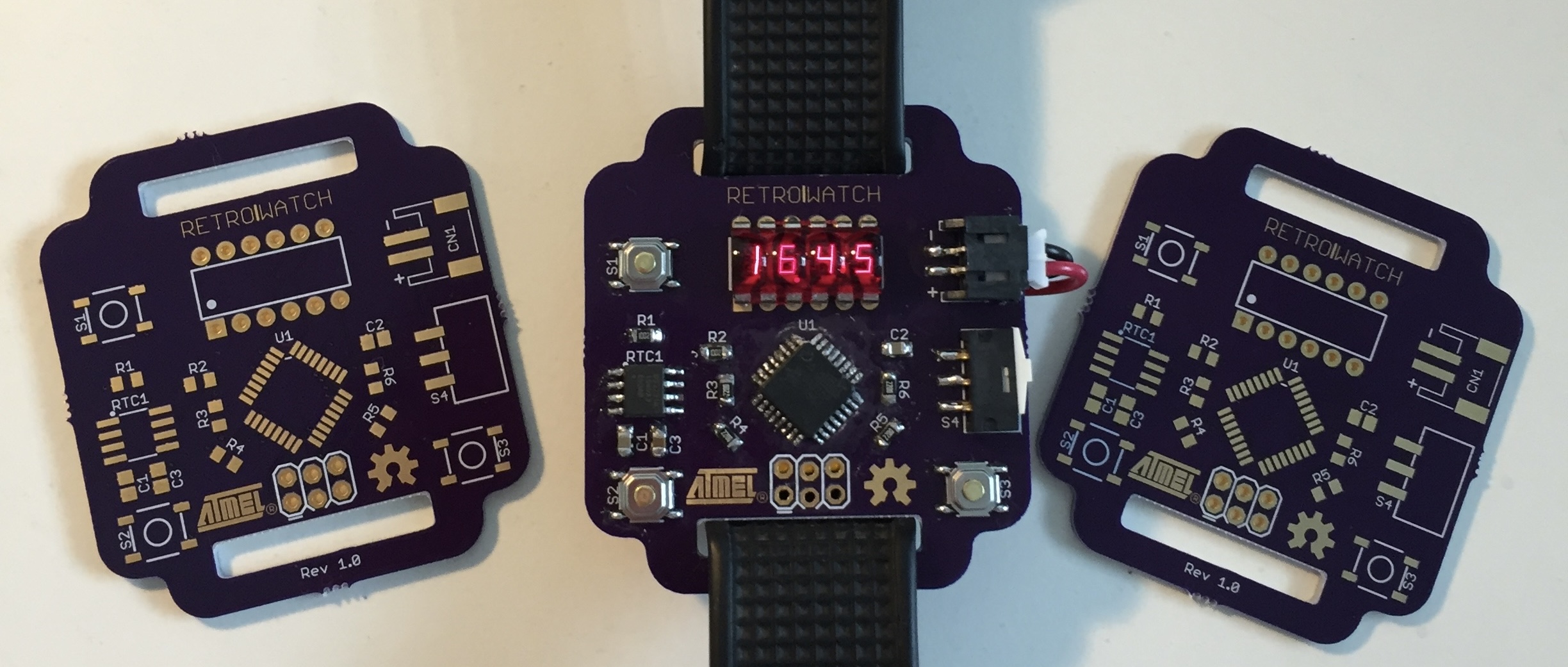Introduction
The aim of the project was to make a fun use of these vintage bubble LED displays I came across while first exploring electronic protoyping websites. Since I grew up in Switzerland the choice of making a watch came naturally. I set out to design a first version that used an ATMega328 as this was the microcontroller I was most familiar with due to its use in the Arduino Uno.
Specs
The requirements were quite simple: have a watch that keeps time accurately while not sacrificing battery life. The time is kept by a Maxim DS3231 Real-Time Clock module, that stays connected to the LiPo battery at all times, keeping time even when the microcontroller and display are not powered.
Functions of the code include:
- Hours, minutes and seconds
- Day, month, year, day of year, day in week, week in year.
- Stopwatch (start, stop, reset)
- Temperature reading from the real-time-clock’s built-in thermometer (accurate to about 3°C)
- Brightness setting in software, saved to EEPROM to save even if the watch is powered off.
Version 2
After building the first version, I wanted to have a USB interface with the Arduino bootloader on the microcontroller in order to upload new code more easily. I also wanted to try my hand at soldering smaller and more challenging components such as QFN packages. This also gave me an excuse to try reflow soldering for the first time with a Kapton stencil.
Further information
Both projects are documented on GitHub (Version 1, Version 2). V1 was also featured in a Hackaday article, and V2 was featured in a Hackster.io article
